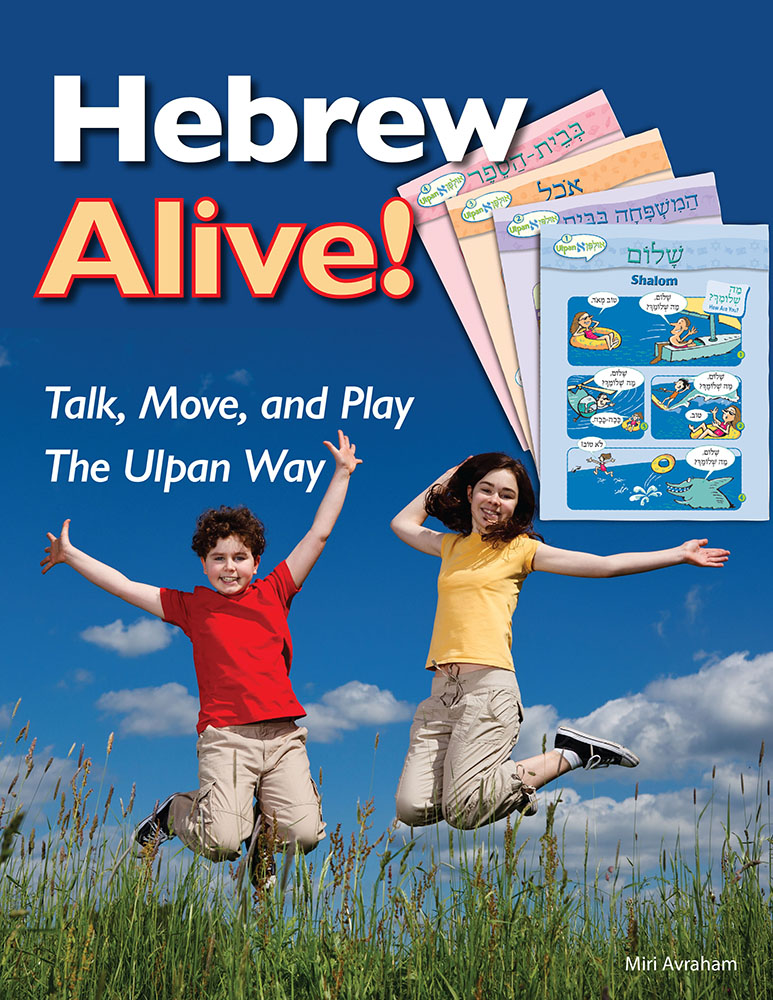This Week's 10 Minutes of Real Fun with Real Hebrew: Circles of Shalom
This Week's 10 Minutes of Real Fun with Real Hebrew: Circles of Shalom
Creating a Hebrew-rich environment makes it easier for children to absorb and retain the language. Energize your classes this week with a quick, useful activity to learn to say a simple Hebrew greeting: "Shalom, what is your name," and how to respond. It's from our new Hebrew resource book, Hebrew Alive!
Make it a school-wide activity by having all the classes, across all grade levels, practice asking people their names and responding. Have fun encouraging learners to greet each other and teachers in the halls or lobby using their new Hebrew phrases!
Circles of Shalom
In this activity students ask each other their names. Divide the class into two groups, and ask students to stand in two circles, one inside the other. Have students in the inner circle face those in the outer circle. Instruct students in the inner circle to shake hands with the person facing them and say:
שָׁלוֹם, מַה שִׁמְךָשָׁלוֹם, מַה שְׁמֵךְ? (Shalom, what is your name?)
The person in the outside circle should answer:
.________שָׁלוֹם, שְׁמִי (Shalom, my name is _____.)
The student asking then says:
.נָעִים מְאוֹד (Pleased to meet you.)
Then clap your hands to signal students in the inner circle to move one space clockwise, so they are facing the next student in the outer circle, and begin again with:
שָׁלוֹם, מַה שִׁמְךָשָׁלוֹם, מַה שְׁמֵךְ? (Shalom, what is your name?)
When students in the inner circle reach the first students they asked, they should stop, and the outside circle should move clockwise and repeat the same action, shaking hands and saying: שָׁלוֹם, מַה שִׁמְךָשָׁלוֹם, מַה שְׁמֵךְ? (Shalom, what is your name?)
Variation: If you have a small group, form two rows of students facing each other. When it’s time to move to the next student, the first student in line one moves to the end of the line, and so on.
Click here for a downloadable version of this activity.
Here are some other ways to create a Hebrew-rich environment:
- • Hang alef bet charts, posters, and word labels around the walls. Click here to download 285 Hebrew word cards.
- • Call on students using their Hebrew names. This will not only help them feel more comfortable with spoken Hebrew, but will also reinforce a sense of Jewish identity and belonging.
- • Play music with Hebrew lyrics during breaks, or as soft background music. Music can be contemporary or traditional.
Circles of Shalom comes from Hebrew Alive, a curriculum guide for teachers to bring the fun and joy of real Hebrew language into their classes. Students from 2nd-7th grades experience authentic Hebrew through games, movement, role playing, and songs. Fully self-executing; no training required. Use the 285 free printable Hebrew word cards for labels and sight words.
Don’t forget to subscribe to our newsletter and connect with us on social media!




